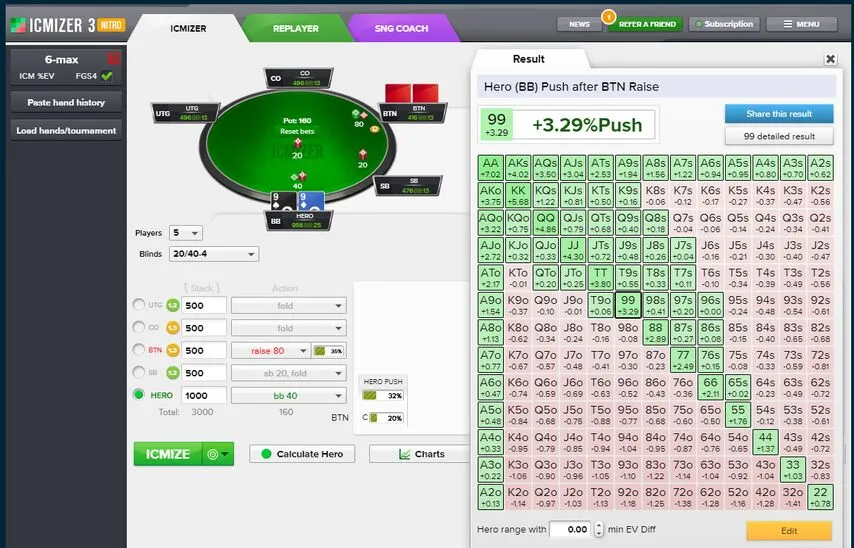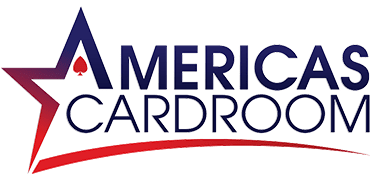In recent years, work on the poker game has reached a new level. Professional players master the theory of optimal play – that is, they look for obviously correct, break-even strategies in hands. This theory is based on the so-called Nash equilibrium.
We'll tell you what is Nash equilibrium, how to find Nash equilibrium – and how the concept is applied in poker using the example of multi-table tournaments and Sit & Go (SNG) games.
Who is John Nash?
John Nash is a brilliant American mathematician, famous for his work on game theory. Nash also made a great contribution to the collection of stereotypes about mad scientists – for many years John suffered from schizophrenia.

For his research, he received the Nobel Prize in Economics in 1994. Nash is the only person in the world to receive both the Nobel Prize and the Abel Prize.
Based on his biography, the film "A Beautiful Mind" was released in 2001 and received 4 Oscars.
What is Nash Equilibrium?
Simple questions first. What is nash equilibrium?
Nash equilibrium is a mathematical theory for making decisions in situations of information vacuum. The definition of Nash equilibrium is a state where no player can improve their outcome by changing their strategy, assuming other players keep their strategies unchanged. Nash equilibrium occurs when each player's strategy is optimal given the strategies of the other players.
When applied to tournament poker, equilibrium shows how a player should shove and call when facing an unknown opponent. The theory has several limitations, the main one being that for it to work and be useful, all opponents at the table must adhere to it. The probability of a perfect Nash equilibrium strategy from all opponents at the table is low.
However, balance helps beginners feel comfortable in the later stages of the tournament. It serves as a starting point. Once information is obtained, the strategy should be adapted to the actions of your opponents. Blindly adhering to the Nash equilibrium does not make sense: it will bring more losses than profits.
After reading this guide, you should go and practice playing optimally in free poker tournaments. We’ve got a fully updated schedule on our website you can check out.
How to Use Nash Equilibrium in Poker
The Nash equilibrium is also used when playing MTT, Sit&Go and Spin&Go, determining the ranges of pushes and folds in stacks up to 15 big blinds. The mathematical concept is limited in that it does not take into account the type of tournament, its stage, and the difference in payouts for final places. True, modern software has learned to add these factors to calculations; we will talk about this further.

The value of equilibrium for tournament players is that it is implemented as static ranges. Beginners simply remember them and use them at the right time. The charts give pure definition on which position with which hands to go all-in or fold with. And by trusting them, you will definitely not make a grave mistake.

If you want to know how to find Nash equilibrium, you’ll need to use certain poker tools. ICMIZER, Simple Postflop, and other solver/push-fold tools build their strategies using Nash. These are all in our Shop at the best prices, with easy-to-understand guides for each one.
When to Avoid Using Nash Equilibrium
The strategy works when other opponents also follow it. In practice, this never happens and the balance must be adapted to the actions of your opponents. In poker, players who are able to see the flaws in their opponents' strategies and exploit them are always more successful.
Equilibrium clearly shows vulnerability when confronted with ICM. The Independent Chip Model is another important concept for tournament players. Simply put, it boils down to the fact that the value of chips won in a tournament is lower than the value of chips lost. If you lose all your chips, you stop participating in MTT. If a situation occurs when you get a nice double up, your expectations do not double. For example, losing your stack in a $10 Sit&Go results in a complete loss of your buy-in. Winning increases the chances of success, but does not guarantee a profit of $10.
Let's take a simple example: you are in the final stage of a tournament along with two opponents. Only the first 2 places will receive prize money. The blinds are 300/600 and the stack sizes look like this: we have 5,000 chips, the big blind has 5,997, and there is a short stack on BTN with 3 chips (who folded their hand). We know that there is a crazy player sitting on the BB, ready to call our push with garbage. They also dealt us a pair of tens preflop (a very strong hand!).
According to Nash equilibrium, this is an easy push, right? Actually no – we are obliged to fold any hand. The BTN with his short stack is doomed and the risk of busting before him is a negative EV. There's no point.

Let's imagine a situation where we still make a push, and the BB calls us with suited J10. His hand wins, we are eliminated, and BTN miraculously ends up in the money.
- According to ICM, we would wait 1-2 hands and get into the prizes.
- According to Nash, we went all-in and were left with nothing.
This is a vivid illustration of the fact that one cannot adhere to the balancing act without regard to the circumstances. The most common conflict between ICM and Nash is in satellites. Situations regularly arise when you have to fold top hands due to the risk of losing a guaranteed ticket. Winning satellites online means you’ll have to blend optimal plays with ICM awareness.
- GipsyTeam's unique promotions
- Help with deposits and cashouts
- Access to private freerolls
- Round-the-clock support
- GipsyTeam's unique promotions
- Help with deposits and cashouts
- Access to private freerolls
- Round-the-clock support
- GipsyTeam's unique promotions
- Help with deposits and cashouts
- Access to private freerolls
- Round-the-clock support
- Уникальные акции от GipsyTeam
- Помощь с депозитами и кешаутами
- Доступ в закрытые фрироллы
- Круглосуточная поддержка
- Уникальные акции от GipsyTeam
- Помощь с депозитами и кешаутами
- Доступ в закрытые фрироллы
- Круглосуточная поддержка
- GipsyTeam's unique promotions
- Help with deposits and cashouts
- Access to private freerolls
- Round-the-clock support
- Уникальные акции от GipsyTeam
- Помощь с депозитами и кешаутами
- Доступ в закрытые фрироллы
- Круглосуточная поддержка
- GipsyTeam's unique promotions
- Help with deposits and cashouts
- Access to private freerolls
- Round-the-clock support
- GipsyTeam's unique promotions
- Help with deposits and cashouts
- Access to private freerolls
- Round-the-clock support
- GipsyTeam's unique promotions
- Help with deposits and cashouts
- Access to private freerolls
- Round-the-clock support
- GipsyTeam's unique promotions
- Help with deposits and cashouts
- Access to private freerolls
- Round-the-clock support
- GipsyTeam's unique promotions
- Help with deposits and cashouts
- Access to private freerolls
- Round-the-clock support
- GipsyTeam's unique promotions
- Help with deposits and cashouts
- Access to private freerolls
- Round-the-clock support
- GipsyTeam's unique promotions
- Help with deposits and cashouts
- Access to private freerolls
- Round-the-clock support
- GipsyTeam's unique promotions
- Help with deposits and cashouts
- Access to private freerolls
- Round-the-clock support
- GipsyTeam's unique promotions
- Help with deposits and cashouts
- Access to private freerolls
- Round-the-clock support
- GipsyTeam's unique promotions
- Help with deposits and cashouts
- Access to private freerolls
- Round-the-clock support
- GipsyTeam's unique promotions
- Help with deposits and cashouts
- Access to private freerolls
- Round-the-clock support
- GipsyTeam's unique promotions
- Help with deposits and cashouts
- Access to private freerolls
- Round-the-clock support
- GipsyTeam's unique promotions
- Help with deposits and cashouts
- Access to private freerolls
- Round-the-clock support
- GipsyTeam's unique promotions
- Help with deposits and cashouts
- Access to private freerolls
- Round-the-clock support
- GipsyTeam's unique promotions
- Help with deposits and cashouts
- Access to private freerolls
- Round-the-clock support
- Уникальные акции от GipsyTeam
- Помощь с депозитами и кешаутами
- Доступ в закрытые фрироллы
- Круглосуточная поддержка
- GipsyTeam's unique promotions
- Help with deposits and cashouts
- Access to private freerolls
- Round-the-clock support
- GipsyTeam's unique promotions
- Help with deposits and cashouts
- Access to private freerolls
- Round-the-clock support
- GipsyTeam's unique promotions
- Help with deposits and cashouts
- Access to private freerolls
- Round-the-clock support
- GipsyTeam's unique promotions
- Help with deposits and cashouts
- Access to private freerolls
- Round-the-clock support
- GipsyTeam's unique promotions
- Help with deposits and cashouts
- Access to private freerolls
- Round-the-clock support
- GipsyTeam's unique promotions
- Help with deposits and cashouts
- Access to private freerolls
- Round-the-clock support
- Уникальные акции от GipsyTeam
- Помощь с депозитами и кешаутами
- Доступ в закрытые фрироллы
- Круглосуточная поддержка
- GipsyTeam's unique promotions
- Help with deposits and cashouts
- Access to private freerolls
- Round-the-clock support
- GipsyTeam's unique promotions
- Help with deposits and cashouts
- Access to private freerolls
- Round-the-clock support
- Уникальные акции от GipsyTeam
- Помощь с депозитами и кешаутами
- Доступ в закрытые фрироллы
- Круглосуточная поддержка
- GipsyTeam's unique promotions
- Help with deposits and cashouts
- Access to private freerolls
- Round-the-clock support
- GipsyTeam's unique promotions
- Help with deposits and cashouts
- Access to private freerolls
- Round-the-clock support
- GipsyTeam's unique promotions
- Help with deposits and cashouts
- Access to private freerolls
- Round-the-clock support
- GipsyTeam's unique promotions
- Help with deposits and cashouts
- Access to private freerolls
- Round-the-clock support
- Уникальные акции от GipsyTeam
- Помощь с депозитами и кешаутами
- Доступ в закрытые фрироллы
- Круглосуточная поддержка
- GipsyTeam's unique promotions
- Help with deposits and cashouts
- Access to private freerolls
- Round-the-clock support
- GipsyTeam's unique promotions
- Help with deposits and cashouts
- Access to private freerolls
- Round-the-clock support
- GipsyTeam's unique promotions
- Help with deposits and cashouts
- Access to private freerolls
- Round-the-clock support
- GipsyTeam's unique promotions
- Help with deposits and cashouts
- Access to private freerolls
- Round-the-clock support
- Уникальные акции от GipsyTeam
- Помощь с депозитами и кешаутами
- Доступ в закрытые фрироллы
- Круглосуточная поддержка
- GipsyTeam's unique promotions
- Help with deposits and cashouts
- Access to private freerolls
- Round-the-clock support
- GipsyTeam's unique promotions
- Help with deposits and cashouts
- Access to private freerolls
- Round-the-clock support
Advantages and Disadvantages of Nash Equilibrium
Let us highlight the advantages and disadvantages of Nash equilibrium in poker.
Advantages and Upsides:
- Will be useful against high-quality players. All qualified opponents know and use equilibrium. Therefore, you should also have an idea about it.
- Push/fold ranges are suitable for any situation or stage of the tournament. A basic tool for confident play in MTT, Sit&Go, Spin&Go.
- They are used not only in hands where you need to push, but also call.
- Easy to adjust to suit the situation. There is no need to learn new range tables from scratch – just adjust existing ones to the characteristics of your opponents' game.
Disadvantages and Drawbacks:
- Often conflicts with ICM. Beginners can get confused and crash out of a tournament when they make a risky push or call.
- Works only in ideal conditions. Even at the final tables of expensive tournaments, no one plays a pure Nash strategy. A mixed strategy is often used.
- Narrows the overview for beginners. Instead of post-flop play, in a borderline situation, beginners will choose to push and miss out on a profit.
Nash Equilibrium is a significant element of strategy in tournament poker. However, it is important to use it in appropriate situations and not mindlessly adhere to it at any stage of the tournament.
On our website, you will also find a lot of other useful information. You can find out how to learn to play poker and where to play poker for money – the top poker rooms available, the advantages and disadvantages of which you can study at any time.




























